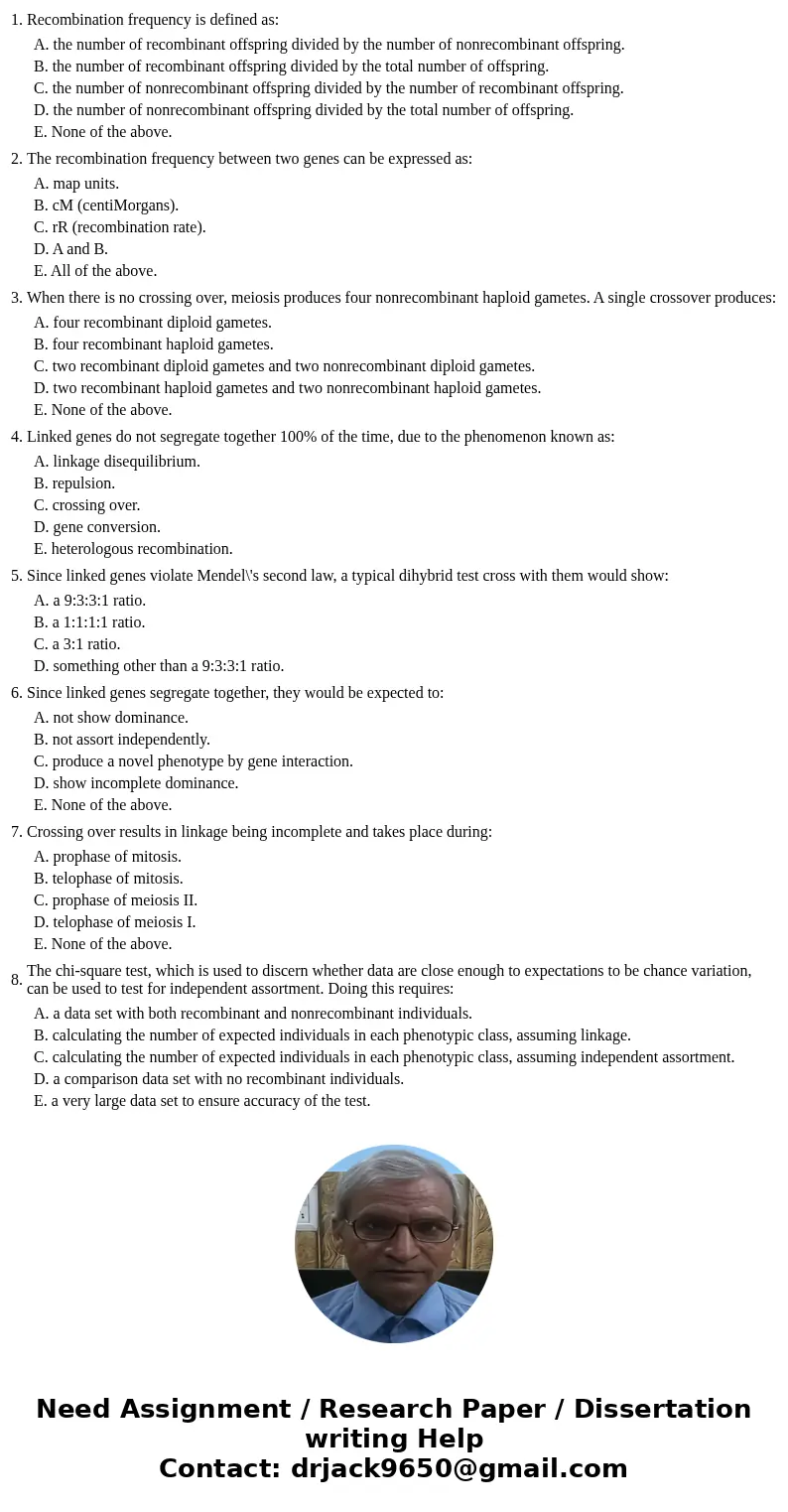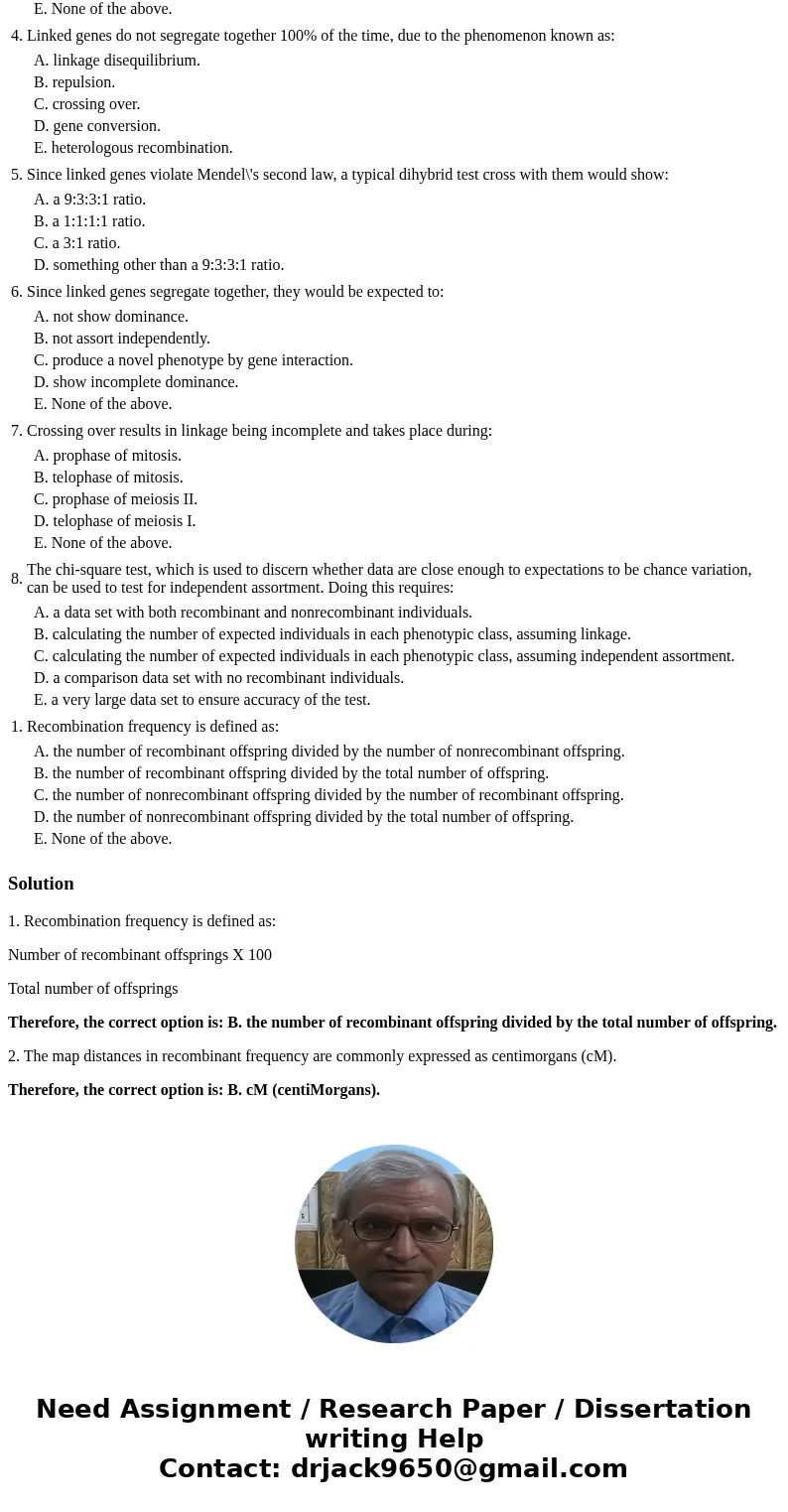| 1. | Recombination frequency is defined as: |
| | A. the number of recombinant offspring divided by the number of nonrecombinant offspring. | | B. the number of recombinant offspring divided by the total number of offspring. | | C. the number of nonrecombinant offspring divided by the number of recombinant offspring. | | D. the number of nonrecombinant offspring divided by the total number of offspring. | | E. None of the above. | |
| 2. | The recombination frequency between two genes can be expressed as: |
| | A. map units. | | B. cM (centiMorgans). | | C. rR (recombination rate). | | D. A and B. | | E. All of the above. | |
| 3. | When there is no crossing over, meiosis produces four nonrecombinant haploid gametes. A single crossover produces: |
| | A. four recombinant diploid gametes. | | B. four recombinant haploid gametes. | | C. two recombinant diploid gametes and two nonrecombinant diploid gametes. | | D. two recombinant haploid gametes and two nonrecombinant haploid gametes. | | E. None of the above. | |
| 4. | Linked genes do not segregate together 100% of the time, due to the phenomenon known as: |
| | A. linkage disequilibrium. | | B. repulsion. | | C. crossing over. | | D. gene conversion. | | E. heterologous recombination. | |
| 5. | Since linked genes violate Mendel\'s second law, a typical dihybrid test cross with them would show: |
| | A. a 9:3:3:1 ratio. | | B. a 1:1:1:1 ratio. | | C. a 3:1 ratio. | | D. something other than a 9:3:3:1 ratio. | |
| 6. | Since linked genes segregate together, they would be expected to: |
| | A. not show dominance. | | B. not assort independently. | | C. produce a novel phenotype by gene interaction. | | D. show incomplete dominance. | | E. None of the above. | |
| 7. | Crossing over results in linkage being incomplete and takes place during: |
| | A. prophase of mitosis. | | B. telophase of mitosis. | | C. prophase of meiosis II. | | D. telophase of meiosis I. | | E. None of the above. | |
| 8. | The chi-square test, which is used to discern whether data are close enough to expectations to be chance variation, can be used to test for independent assortment. Doing this requires: |
| | A. a data set with both recombinant and nonrecombinant individuals. | | B. calculating the number of expected individuals in each phenotypic class, assuming linkage. | | C. calculating the number of expected individuals in each phenotypic class, assuming independent assortment. | | D. a comparison data set with no recombinant individuals. | | E. a very large data set to ensure accuracy of the test. | |
| 1. | Recombination frequency is defined as: |
| | A. the number of recombinant offspring divided by the number of nonrecombinant offspring. | | B. the number of recombinant offspring divided by the total number of offspring. | | C. the number of nonrecombinant offspring divided by the number of recombinant offspring. | | D. the number of nonrecombinant offspring divided by the total number of offspring. | | E. None of the above. | |
1. Recombination frequency is defined as:
Number of recombinant offsprings X 100
Total number of offsprings
Therefore, the correct option is: B. the number of recombinant offspring divided by the total number of offspring.
2. The map distances in recombinant frequency are commonly expressed as centimorgans (cM).
Therefore, the correct option is: B. cM (centiMorgans).


 Homework Sourse
Homework Sourse